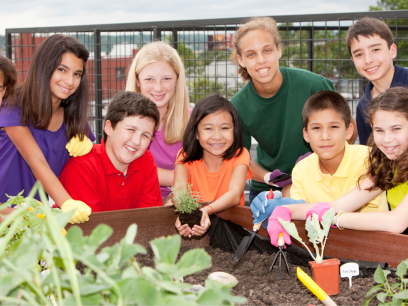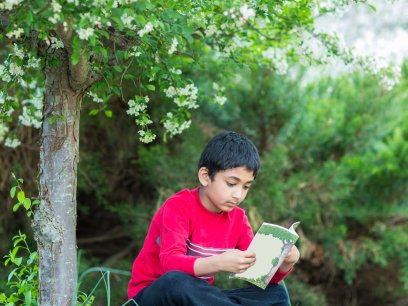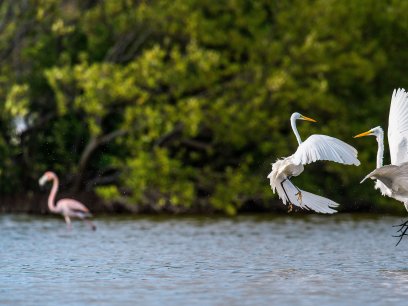
The National Environmental Education Foundation (NEEF) awarded its first Schoolyard STEM Lab with funding provided by Samsung. The project culminated in a celebratory event at Nizhoni Elementary School on the Navajo Reservation in Shiprock, New Mexico.
The actual physical structure of the STEM Lab is a geodesic dome, designed by a group called Growing Spaces based out of Colorado. The dome is engineered to provide a suitable environment for growing plants year-round, no matter where it is located or what the temperature and growing conditions are like outside. But beyond the physical structure of the dome, the space it creates as a learning environment within is what NEEF was really interested in bringing to the school.
Nizhoni Elementary was designated a Turnaround School with 93% of the 570 students below the poverty level and 100% participating in the federal free and reduced lunch program. The teachers are passionate about their role as educators and mentors for the students and the parent network is very supportive of school programs. The desire to incorporate more environmental education into the school day was apparent, but with much of the surrounding landscape dry and barren, opportunities were limited.
Gifted education teacher, Jennifer Choate, describes the struggle. “We really don’t have a lot of people growing here because Shiprock doesn’t have a good water supply… If you look at our neighborhood, people don’t have gardens and they don’t really grow things… We have been doing environmental science for many years and we’ve tried to grow things out here with varying levels of success, so we really needed a place to grow that would be here for years.” Jennifer is the one who wrote the application for the STEM Lab and her excitement about the possibilities it would bring to lessons at Nizhoni was clear. “It’s going to be great for the kids to be able to plant all year and be able to see nature all year, and when they come back after the summer it’ll still be there!”
During the ceremony to christen the new STEM Lab and officially open it for use to the school, Mr. Arnold Clifford, a Navajo elder and professor of ethno botany at Dine College, helped put the event in perspective for the students. “We’ve never had anything like this on the reservation, so take advantage of it. Learn from it. Learn from what’s outside and bring it indoors.” The purpose of the STEM Lab fits closely with Mr. Clifford’s own interests as someone who grew up with a fascination for the natural world and who followed that interest to a career in education to share his knowledge with others. “Even today, we have to travel far to get to a museum, or galleries, or a world-class library and it puts us all at a disadvantage. But you don’t have to think that way. You can create your own world. Look all around you. Everything around you is science. There are so many things that need to be studied out there.”
Mr. Clifford has been working with colleagues for the past 20 years on documenting all of the native plants on the reservation and urged the students to use the STEM Lab as a way to connect back to their Navajo roots by studying the significance of many of these plants to the native culture.
He gave the students many pieces of advice during the Earth Day celebration, switching between Navajo and English as he spoke, but this insight into the value of learning and the potential this new STEM Lab provided resonated particularly true of NEEF’s intentions for this project. “What this STEM Lab is creating here is a seed. You kids are in the process of growing to attain great height—to attain great minds... So think about this lab as a seed for yourselves that you are going to plant for your future. Whatever you are going to do—whenever those seeds are growing, you’re growing along with them.”
Watch the video to learn more about the STEM Lab project:


